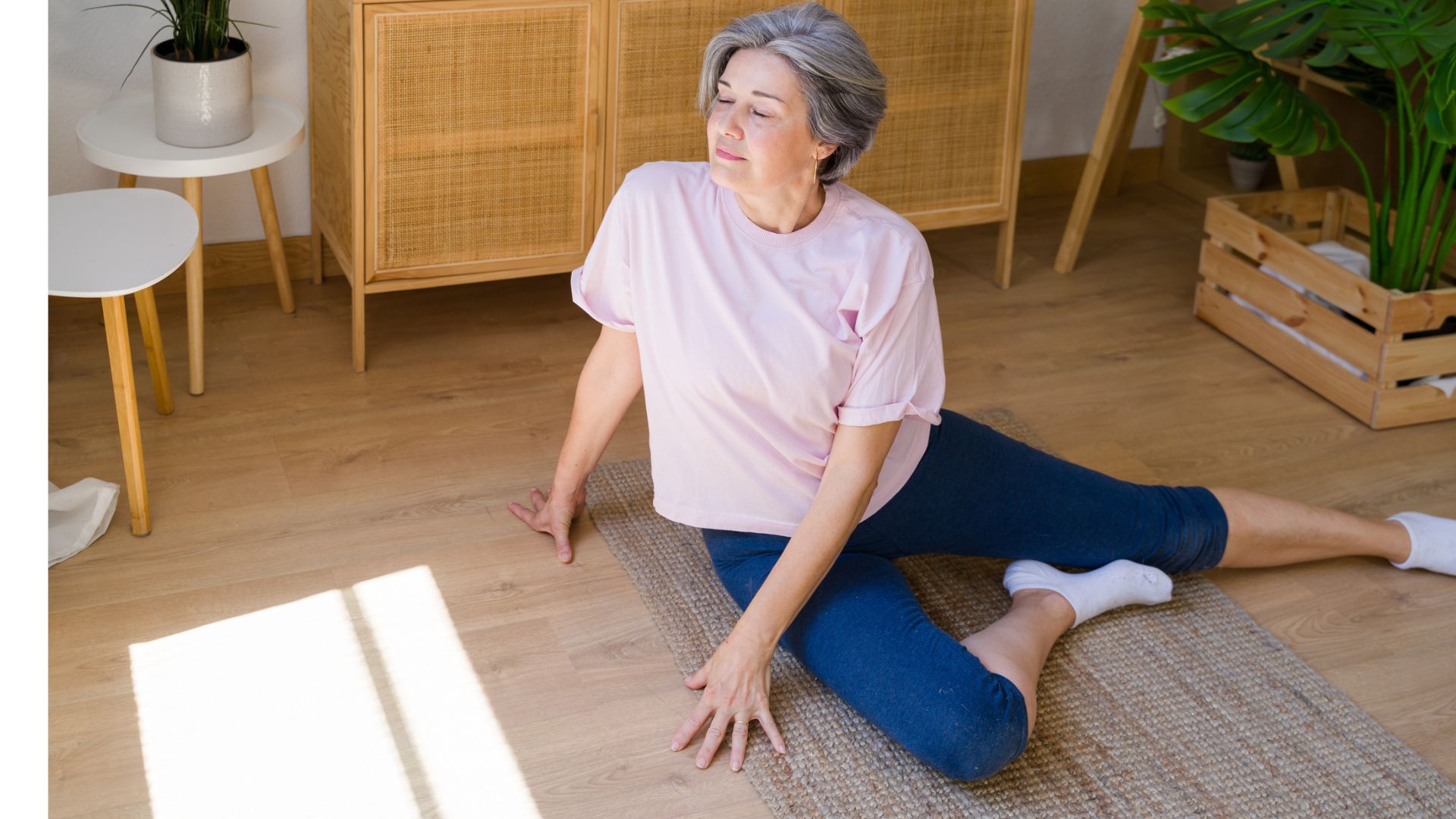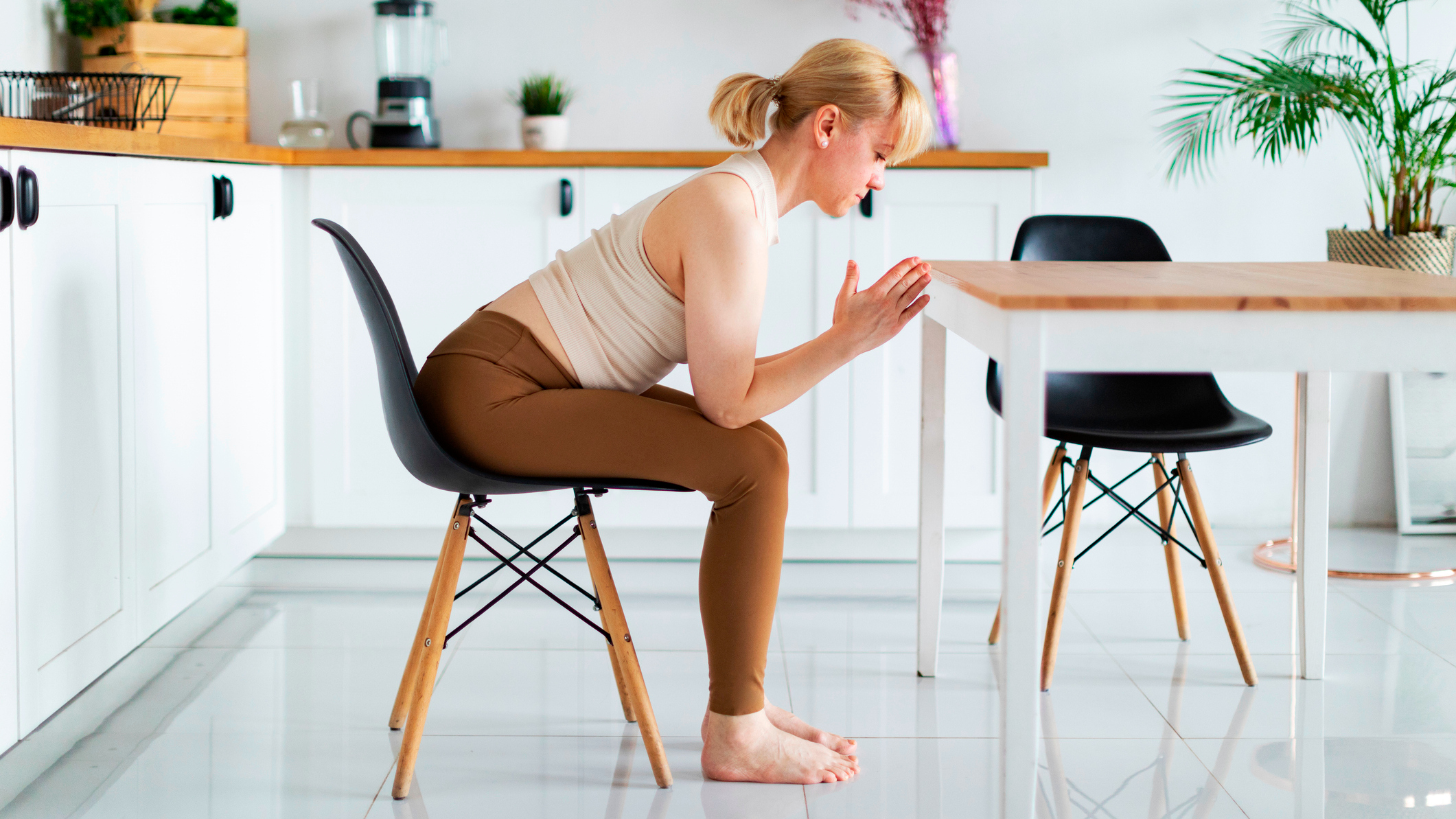Blog
A mobility coach recommends three daily stretches to unlock tight hips—I put them to the test

What do you get when you combine prolonged periods of sitting, weak core muscles and underpowered glutes?
Shortened and tightened hip flexors, a back ache-inducing anterior pelvic tilt, limited range of motion and considerable difficulty dropping into a squat.
This is my world.
Scouring the internet for a remedy, I spotted a catchy Instagram post from mobility coach Charlotte Hazelwood of Elevate with Charlotte fame, in which she shared a daily routine that helped her unlock tight hips in three minutes flat.
Sprinkling the moves: 90/90 heel taps, frog internal lift offs and seated good mornings throughout the day helped restore her hips to their “buttery” former selves.
Watch how to do Charlotte Hazelwood’s three stretches
These are great stretches. The only problem was that I found the exercises too advanced.
So I asked Aaron McCulloch, director of YOUR Personal Training, a provider of personal trainers in the UK, for entry-level alternatives, to help me build mobility safely and effectively, without putting my hips under too much stress, too soon.
I decided to try these alternative moves out instead, dedicating three minutes a day for a week.
McCulloch’s beginner modifications
1. Swap 90/90 heel taps for supported 90/90 holds
(Image credit: Getty Images)
“The original heel taps demonstrated by Hazelwood are a great drill, but they can be tough if you’re not yet comfortable in deep hip positions,” says McCulloch. Instead, start by simply holding the 90/90 seated position with your hands behind you for support.
How to do it:
- Sit with your knees bent, feet on the floor shoulder-width apart and hands behind you for support.
- Drop both knees to one side, maintaining the 90˚ bend in both knees.
- Hold this 90/90 position for 30 to 60 seconds on each side.
- As your mobility improves, begin experimenting with gentle forward leans or controlled lifts of your back leg, as demonstrated by Hazelwood.
Why it works: “You’ll start to build external and internal hip rotation without having to lift or rotate your legs—ideal if you’re still developing control and stability,” says McCulloch.
2. Swap frog internal lift-offs for frog rock-backs
“Frog lift-offs are effective, but they demand a high level of control, which is something beginners are often still building,” says McCulloch. Instead, keep your feet grounded with your knees as wide as you can comfortably manage and slowly rock your hips forward and back.
How to do it:
- Start on your hands and knees, then move your knees out wide with feet turned out.
- Slowly rock your hips back toward your heels, then return to the start.
- Pause for a second or two at the back of each rock to feel the stretch.
- Breathe deeply and keep your movement smooth and steady.
- Perform 8-12 slow, controlled reps.
Why it works: “It helps you explore hip external rotation without the intensity of lift-offs. There’s no need to lift the knees—just move through a gentle range and build awareness,” says McCulloch.
3. Swap seated good mornings for seated forward leans

(Image credit: Getty Images / JulPo)
If your tight hips are equally matched by tight hamstrings these will feel nigh on impossible. Instead, McCulloch recommends reducing the range of the forward fold to a gentle lean.
How to do it:
- Sit on a chair or bench with your knees bent and feet flat on the floor.
- Position your knees wide apart but within a comfortable range.
- Keeping a straight back throughout, gently hinge forward at your hips as far as you can without rounding your spine.
- Hold for 20 to 30 seconds, repeat a total of three times.
Why it works: “Seated forward leans allow you to practice hip hinging and forward folding in a more accessible way, without placing too much strain on your lower back,” says McCulloch. “Just focus on leading the movement with your chest. Think chest forward, rather than head down.”
How I got on with the three moves
Following Hazelwood’s plan with McCulloch’s regressions, I spent three minutes a day stretching my hips for a week.
Because I found my hips especially tight first thing in the morning, I preferred to do them just before bed or between meetings if working from home (though there’s nothing stopping you doing them in the office either, because they won’t make you break sweat).
After a couple of days, I certainly noticed my hips feeling worked—probably because I’d clearly been neglecting mobilizing them for my previous 37-plus years.
Initially, this left them feeling a little tender, just like a muscle group that’s subjected to lots of sets and reps, but that eased off toward the end of the week.
I certainly plan to keep using these three moves to keep the joints open, but mobile hips are only part of the equation, and I need to ensure I pair this with a strong core and active glutes.
And, as with anything, repetition is the secret ingredient. “When it comes to mobility, consistency beats intensity,” says McCulloch.
“You don’t need to force range, just show up regularly, move with intention and give your body time to adapt. Stick with it, and both your hips—and your squat—will thank you.”












